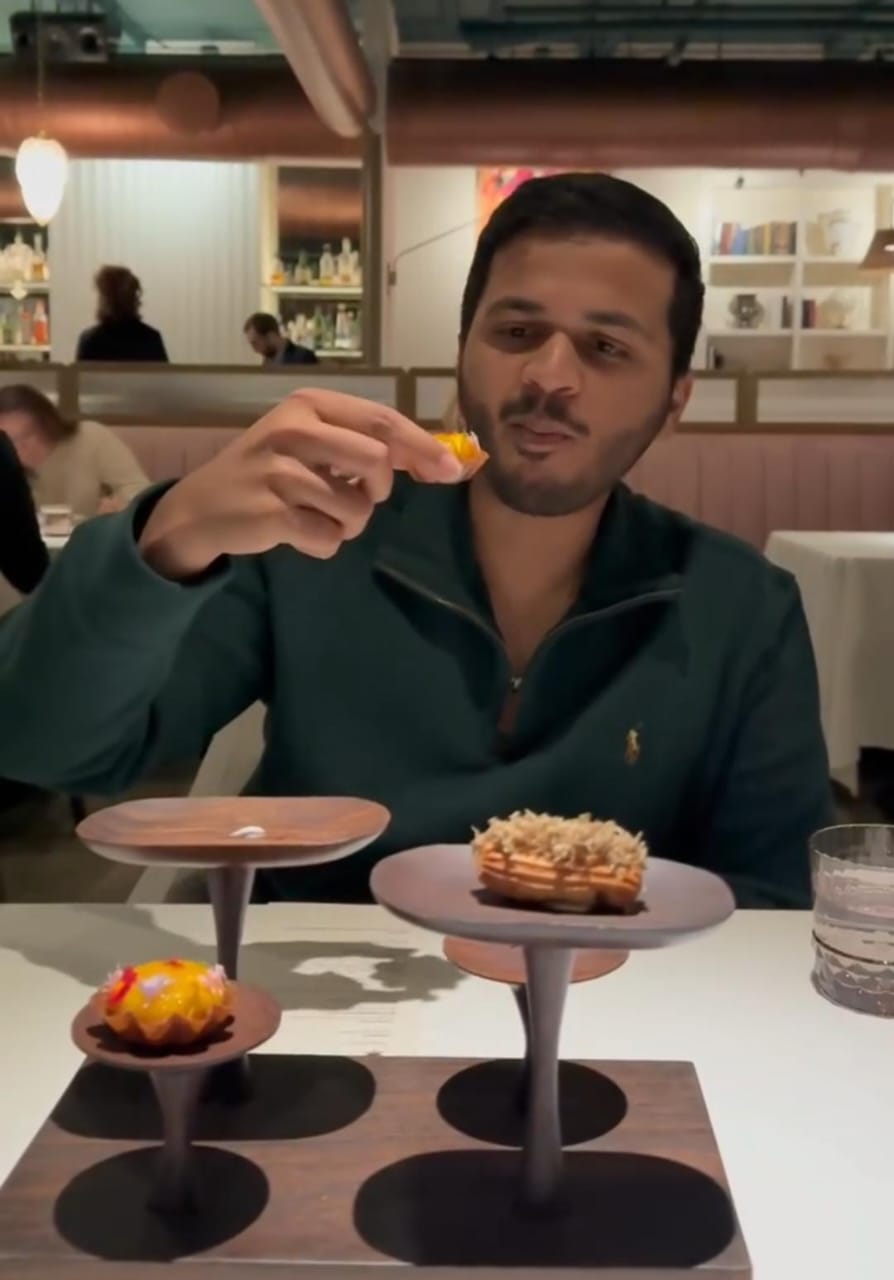When you think of chocolate, it is usually in the form of glossy bars, ready to melt in your mouth. But the story of chocolate begins far from the confectionery aisle - with cacao fruits swaying gently on tropical trees. In that sense, chocolate really does grow on trees. Through a meticulous, patient, and highly scientific process, this humble fruit transforms into the luscious, velvety treat we can never quite resist.
Once you understand how chocolate is truly made, even a single square will remind you of its fascinating journey. Each bite represents a marriage of hard work, creativity, science, and craft.
Yet, much of the chocolate we have grown up eating tells a different story. Many mass-market producers farm and ferment cacao carelessly, leaving its natural complexity underdeveloped, and then mask it with additives to produce a uniform and often uninspiring taste.
The true magic of chocolate lies in the spectrum of flavour notes that come from the fruit pulp surrounding the bean. There is no single fixed chocolate flavour. You might taste creaminess, berries, citrus, wood, bitterness, nuts, liquorice, or earthy tones - sometimes all in one bar.
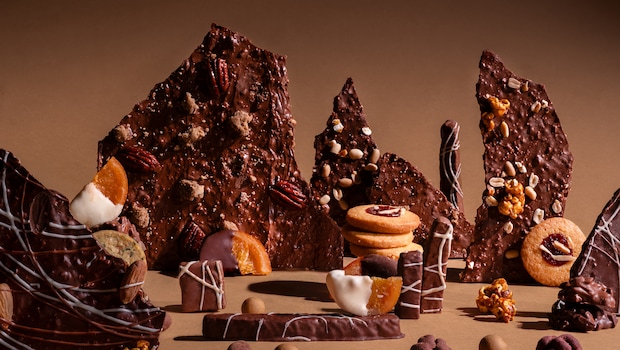
Photo Credit: Manam Chocolate
Single-origin chocolates preserve this diversity, letting each bean's terroir shine. When brands turn to artificial flavours, it is often because their cacao lacks these naturally occurring notes that only come from the bean itself.
Why Eating Chocolate Can Be Good For You
Beyond taste, chocolate, especially dark single-origin varieties, offers some nutritional benefits. It is rich in antioxidants, which may help reduce inflammation and protect cells from damage. Moderate consumption can also boost mood, thanks to compounds that stimulate the release of endorphins. Eating chocolate in its purest form lets you enjoy these benefits while appreciating the natural complexity of flavours, rather than masking them with sugar or additives.
What Is Single-Origin Chocolate?
Single-origin chocolate is made from cocoa beans grown in one specific geographical region. Soil type, rainfall, heat, humidity, and even the surrounding crops influence the aroma and flavour profile, making each origin distinctive - a quality cherished by chocolate connoisseurs.
The best single-origin chocolates are bean-to-bar or tree-to-bar and even beyond, meaning the same maker oversees the process from harvest to finished product. If you want to taste chocolate as nature intended, this is the way to go.
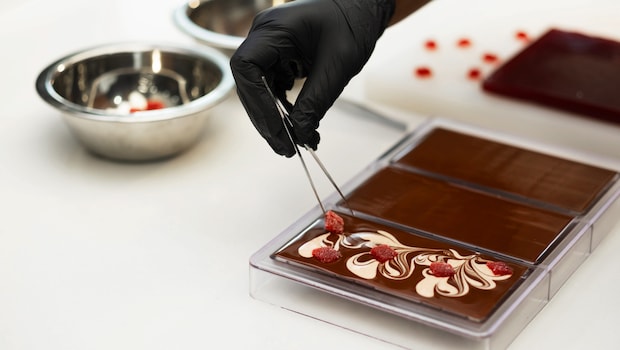
Photo Credit: Manam Chocolate
How To Appreciate The Flavours In Chocolate
Tasting chocolate like a connoisseur enhances your experience. Begin by looking at the chocolate's colour and texture, then smell it to identify fruity, nutty, or earthy aromas. Break it to hear the snap, a sign of proper tempering. Let it melt on your tongue and note the sequence of flavours. Single-origin chocolate is particularly rewarding, as each bean's origin, fermentation, and processing contribute to a unique tasting profile that mass-market chocolate cannot replicate.
Are There 'Chocolate Trees' In India?
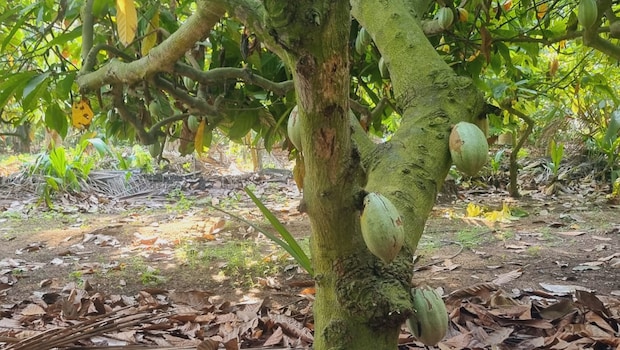
Cacao, scientifically known as Theobroma cacao, thrives in tropical climates, and southern India offers ideal conditions. Kerala, Karnataka, and Tamil Nadu provide the perfect balance of rainfall, temperature, and humidity for cacao cultivation. Andhra Pradesh and Kerala together produce nearly 80 per cent of India's cocoa.
Making Single-Origin Indian Chocolate
A single-origin bar is more than a sweet - it is a story, one that celebrates where the bean comes from rather than hiding it behind the location of the factory.
Historically, India consumed mass-produced chocolate rather than producing fine chocolate. But in recent years, a growing number of chocolatiers have taken on the challenge of showcasing the complexity of Indian cacao through bean-to-bar craftsmanship. By controlling every stage of production - from sourcing beans to creating the final bar - they have sparked a quiet revolution in India's chocolate industry.
How Chocolate Is Made From Scratch
Here is how fine single-origin chocolate is crafted in India, where the fruity notes come from the cacao itself, each pod is handled with care, and makers work directly with farmers for fair pay and quality. The result is a tree-to-bar experience that is delicious, ethical, and entirely homegrown.
Step 1: Harvesting
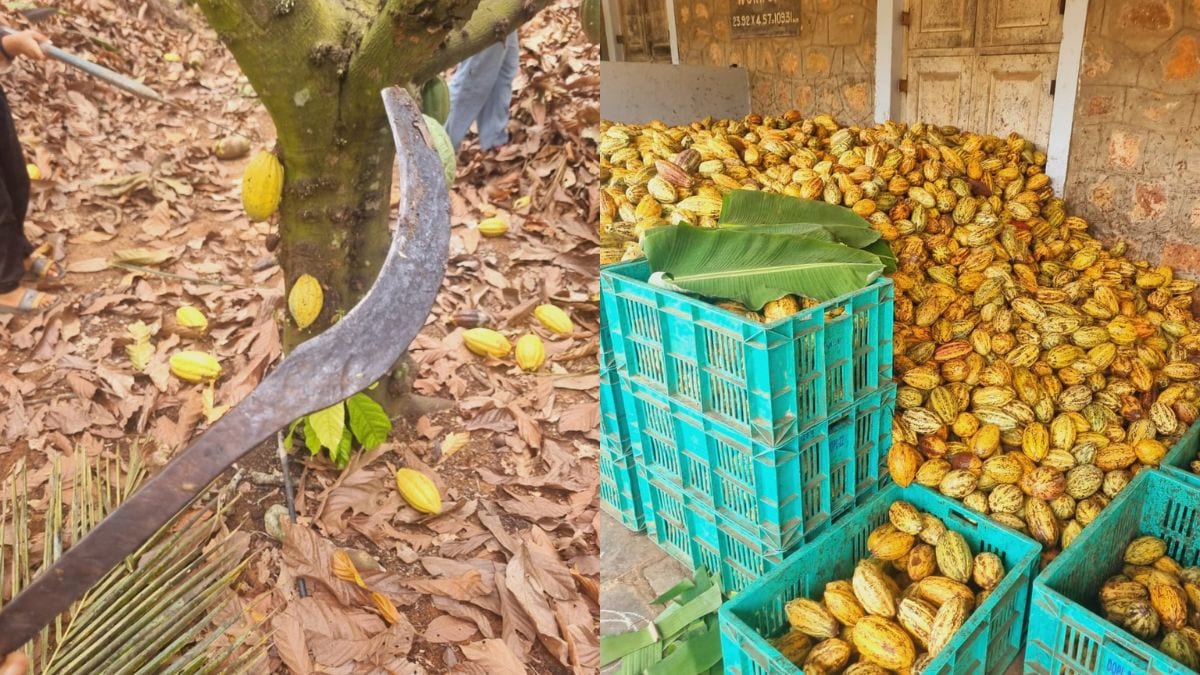
Photo: Jigyasa Kakwani
It starts with exceptional cacao, and in India's case, this means working with beans that naturally have a sharper, more acidic profile, requiring skill to unlock their best flavours. Great chocolate begins with valuing the farmer. Many single-origin makers engage in direct trade, paying premium prices to farmers, often supporting community education and development. Only perfectly ripe pods, identified by colour and a soft, hollow tap, are handpicked.
Step 2: Pod Breaking
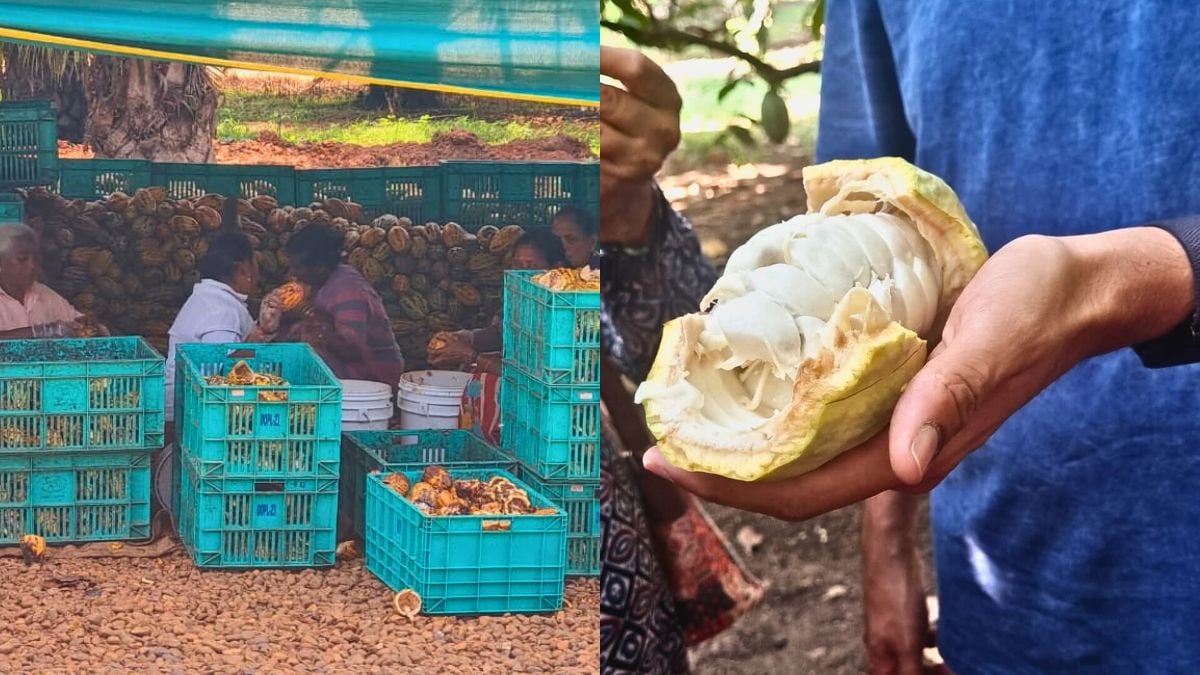
Within hours, each pod is cracked open with wooden tools to protect the beans. The cacao pulp is sweet, fragrant like lychee, with a melon-like flavour. While the seeds can be eaten raw, they are waxy, bitter, and far from the chocolate we know.
Step 3: Fermentation
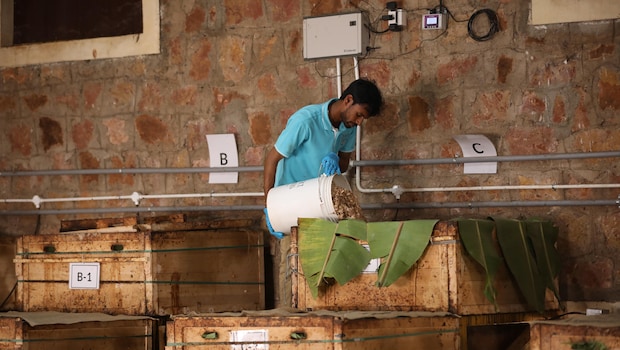
Photo Credit: Manam Chocolate
Still coated in pulp, the beans head to the fermentary, the most critical stage for developing flavour. Over several days, they are moved between wooden boxes, allowing oxygen to work its magic and coax out fruity, nutty, and earthy layers.
Step 4: Drying
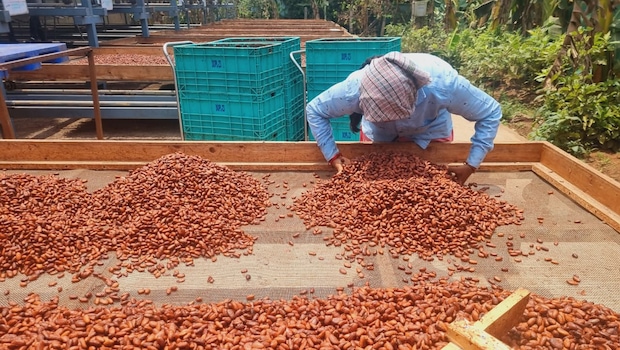
Photo: Jigyasa Kakwani
Fermented beans are dried slowly on retractable racks, moving between sun and shade to reduce bitterness and deepen flavour. Each bean is inspected for damage or mould, then graded for uniform roasting.
Step 5: Sorting
Finally, the beans are sealed and sent to the chocolate factory, ready to be transformed into craft chocolate bars, bonbons, pastries, gelato, and more.
A Glimpse Inside An Indian Chocolate Factory
If the 2005 film Charlie and the Chocolate Factory made you wish for a golden ticket, imagine stepping into a real-life chocolate wonderland in India. At Manam Chocolate's Karkhana in Hyderabad, and now at their new outlet in Delhi's Eldeco Centre, chocolate-making is both an art and an immersive experience.
Manam Chocolate's founder, Chaitanya Muppala, describes his journey to NDTV: from knowing nothing about chocolate to, within five years, building one of the world's largest fine-flavour cacao fermentaries, collaborating with nearly 200 farmers, and creating a craft chocolate brand in a category that barely existed in India.
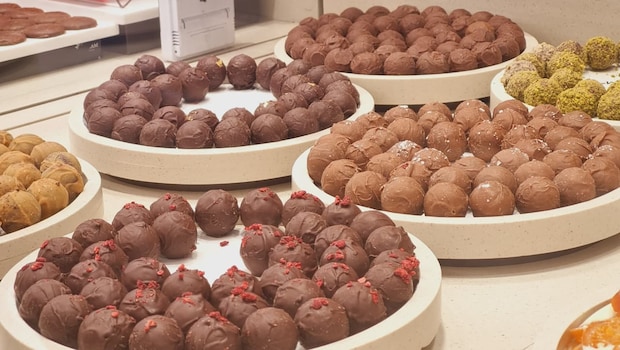
Photo: Jigyasa Kakwani
"Making chocolate at the origin is rare," he says, "but we're doing it - and our craft chocolate holds its own against global makers. Not all expensive chocolate is good, but all good chocolate is expensive. Often, we pay a premium just for a European label, without realising it is not necessarily better."
Manam Chocolate's approach blends Indian ingredients with global sensibilities - curry leaves in bonbons, Chakkarakeli bananas in soft serve, and raspberry balsamic truffles - without falling into the trap of chocolate samosas or other stereotypes.
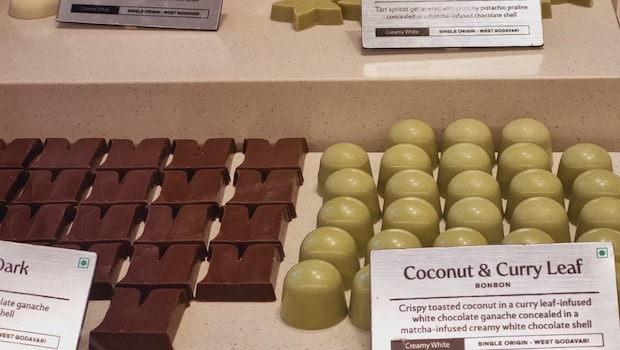
Photo: Jigyasa Kakwani
Manam Chocolate's Delhi Experiential Space Launch
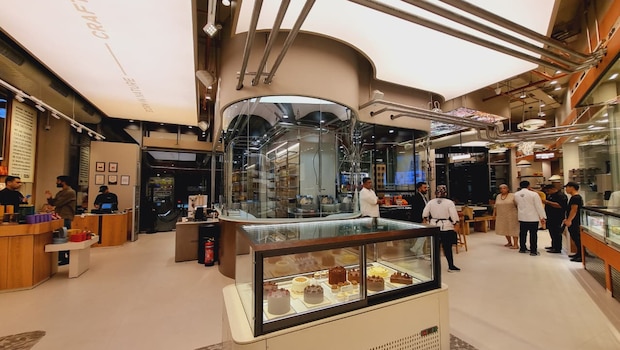
Photo: Jigyasa Kakwani
The Delhi experential space builds on the Karkhana's storytelling, adding refined touches. While much of the chocolate crafting happens onsite, the experience is multi-sensory: live video feeds from farms and fermentaries, chocolate flowing through pipes across the space, chocolate craftspeople at work in full view, a classroom to understand chocolate better, and a spread of delectable chocolates to choose from.
Here, chocolate's journey from tree to bar is not just explained - it is lived.
Where: Manam Chocolate, Delhi Eldeco Center, Saket, New Delhi
How To Choose Real Single-Origin Chocolate
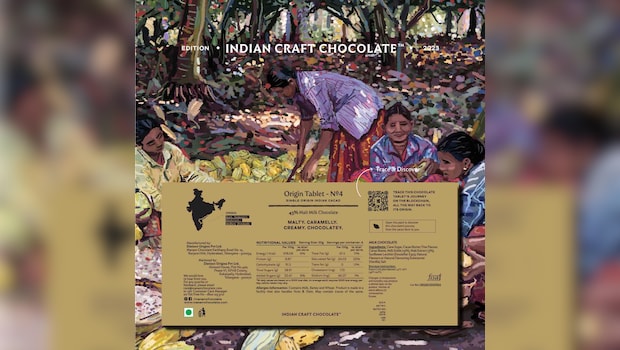
Photo Credit: Manam Chocolate
When shopping for chocolate, look for clear labelling on bean origin and production method. Bean-to-bar or tree-to-bar chocolates usually indicate direct trade with farmers and a controlled process from pod to bar. Check for high cocoa content, minimal additives, and avoid products that rely on artificial flavours or fillers. Single-origin chocolate should feel textured, complex, and fragrant, reflecting the unique characteristics of the beans' terroir.
About Jigyasa KakwaniJigyasa finds her solace through writing, a medium she is exploring to make the world more informed and curious with every story published. She is always up for exploring new cuisines, but her heart comes back to the comforting ghar-ka-khana.
